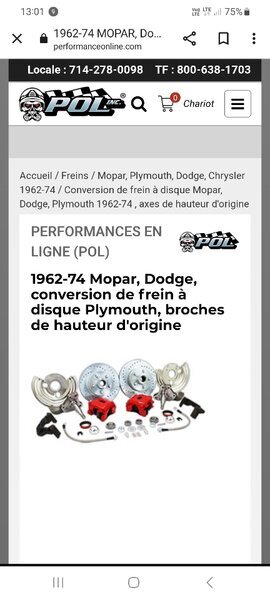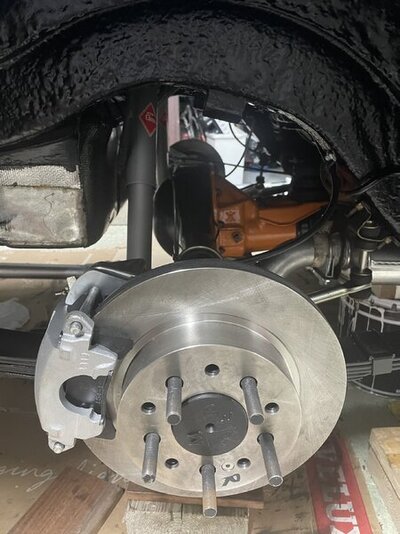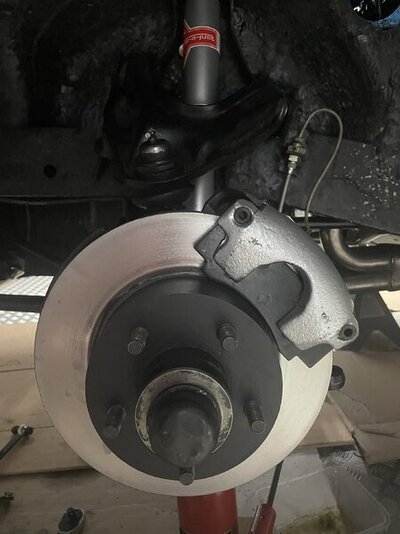Hi, we made brake upgrade on a 69 Cuda Formula S (a friend of mine) with stock front factory discs (he didn't want to upgrade to 4.5'' bolt pattern and with 4'')
the breaking was poor in spite of new front discs and rebuild calipers
We decided to install A199-1 SSBC calipers and semi metallic pads, that fits with the factory discs
the rear brakes was modified with DBK 384 disc kit
New power assist and master cylinder from MP Brakes
The VL3359K valving for a 4 wheel disc system installed
After installation and bleeding, we are a little disappointed with the braking !
the rear is OK
But the car doesn't brake enough in front wheels, we measured about 60 Bars pressure in front
Has anyone already installed these SSBC calipers with factory discs ? what result ?
It may be a ''friction'' problem between discs and pads ? disc surface too hard ? or inappropriate pads
Thanks for your reviews
lionel


the breaking was poor in spite of new front discs and rebuild calipers
We decided to install A199-1 SSBC calipers and semi metallic pads, that fits with the factory discs
the rear brakes was modified with DBK 384 disc kit
New power assist and master cylinder from MP Brakes
The VL3359K valving for a 4 wheel disc system installed
After installation and bleeding, we are a little disappointed with the braking !
the rear is OK
But the car doesn't brake enough in front wheels, we measured about 60 Bars pressure in front
Has anyone already installed these SSBC calipers with factory discs ? what result ?
It may be a ''friction'' problem between discs and pads ? disc surface too hard ? or inappropriate pads
Thanks for your reviews
lionel




















